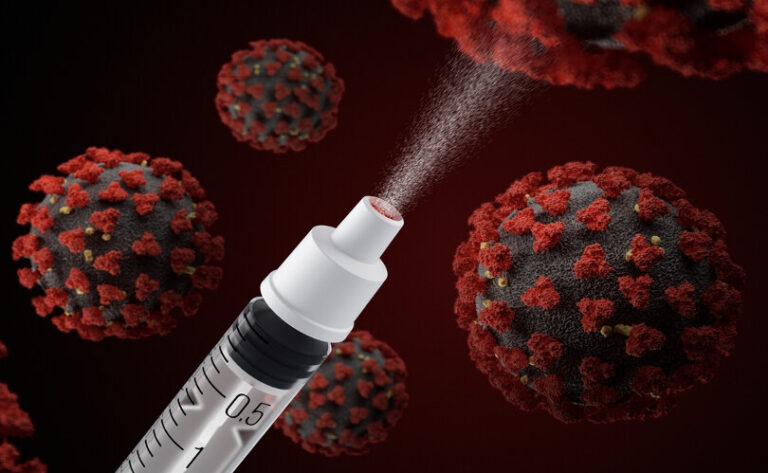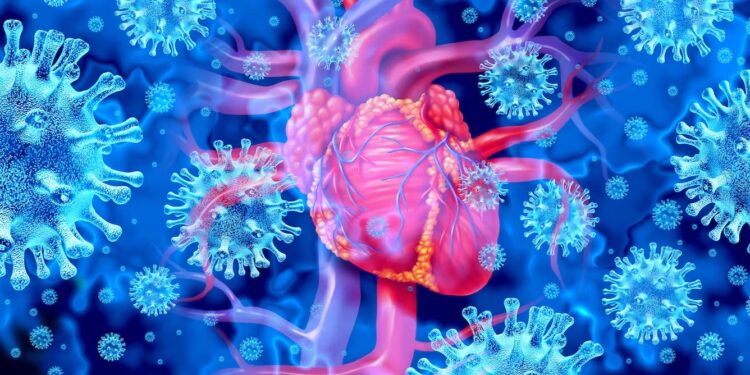Certain COVID-19 Vaccines Linked to Elevated Risk of Guillain-Barré Syndrome

As the rate of vaccination increases so has the incidence of GBS—particularly after viral vector-based vaccines such as AstraZeneca.
As the rate of vaccination increases, an increasing number of side effects are being reported. COVID-19 viral vector-based vaccines are three to four times more likely to cause Guillain-Barré syndrome (GBS) than mRNA-based vaccines, according to research.
The Link Between Vaccines and Guillain-Barré Syndrome Risk
A growing body of evidence suggests a link between COVID-19 vaccines and Guillain-Barré Syndrome. In one study, GBS cases increased 42 days after receiving the first dose of the AstraZeneca vaccine. The researchers believe there may be a link between the AstraZeneca vaccine and an increased risk of GBS.
A prospective surveillance study published in Scientific Reports in March found that between February 2021 and March 2022, 38,828,691 doses of COVID-19 vaccine were administered in Gyeonggi Province, South Korea, with 105,409 adverse events reported, including 55 cases of GBS.
After analyzing the risk factors for GBS after COVID-19 vaccination, researchers discovered that viral vector-based vaccines were associated with a three-to-fourfold higher risk of GBS than mRNA-based vaccines.
In terms of age and gender, GBS was more common in people aged 60 and older compared to younger age groups, and it was more common in men than women.
According to a vaccine mechanism evaluation, the incidence rate of GBS for viral vector-based vaccines was 4.49 cases per million doses, which was higher than the incidence rate of 0.80 cases per million doses for mRNA-based vaccines (Pfizer and Moderna).
The researchers are urging health care providers to closely monitor individuals who have received their first dose of viral vector-based vaccines following COVID-19 vaccination.
Onset of GBS Following COVID-19 Vaccination
The British Medical Journal published a case study in 2021 about a 48-year-old man from Malta who developed facial paralysis on the left side of his face 10 days after receiving the first dose of the AstraZeneca vaccine. He was diagnosed with Bell’s Palsy grade III and was treated with prednisolone, an oral corticosteroid, eye drops, and eye care.
Prior to vaccination, the patient had pre-existing blood lipid abnormalities, but no other relevant medical history or infection history.
The patient also complained of excruciating pain in the center of his back, despite the fact that traditional pain relievers were ineffective. The patient’s facial paralysis symptoms worsened over the next 24 hours, and similar symptoms appeared on the right side of the face.
Three days later, the patient experienced grade V facial nerve paralysis on both sides of the face, as well as severe back pain. However, neurological examinations revealed no flaws. A lumbar puncture revealed elevated protein levels (1,264 milligrams per liter) and an excess of lymphocytes above normal levels, leading to the diagnosis of GBS. Following an improvement in the patient’s facial paralysis symptoms, the patient was discharged.
However, the patient returned to the emergency department in less than 24 hours with symptoms such as lower limb weakness, absent reflexes, foot drop, moderate weakness in the hands, and pain sensations when wearing gloves or long socks. The doctor prescribed intravenous immunoglobulin (IVIg) at a dose of 2 grams per kilogram of body weight for five days, in addition to oral prednisolone.
Following that, the patient’s condition rapidly improved, with significant improvement in muscle strength and limb paralysis, as well as the complete disappearance of the facial paralysis symptom. The patient was able to function independently again after undergoing intensive physical rehabilitation therapy. A two-month follow-up exam revealed only mild weakness in both hand muscles.
According to researchers, among the various side effects of different vaccines, neurological complications may be the most severe, causing the most concern.
Multiple peripheral nerves in the body are affected by GBS (polyneuropathy). Peripheral neuropathy can also affect the nerves that control heart and circulation system functions (cardiovascular autonomic neuropathy).
Symptoms of Guillain-Barré Syndrome
Guillain-Barré Syndrome is a rare and severe neurological disorder caused by immune system dysfunction, with an extremely low incidence rate, according to the National Health Service in the United Kingdom.
Under normal conditions, the immune system attacks any pathogens that enter the body. When the immune system fails, it can attack and damage the nerves by mistake.
GBS symptoms usually start in the hands and feet and spread to the arms and legs. Numbness, pins and needles, muscle weakness, pain, and balance and coordination issues are all common symptoms. These symptoms may worsen in the coming days or weeks before gradually improving. GBS can cause difficulty walking, breathing, or swallowing in severe cases. It can sometimes be life-threatening, and some people may experience long-term complications. If you have any GBS symptoms, you should seek medical attention right away.
According to the most recent records released by the Taiwan Ministry of Health and Welfare’s Vaccine Injury Compensation Program on August 10, a total of 150 GBS cases related to adverse events following COVID-19 vaccination have been reviewed. Mr. Tsai, 56, from Taipei, was among those who experienced numbness in all four limbs, breathing difficulties, and unsteady walking after receiving the AstraZeneca vaccine. Furthermore, two people who received the Moderna vaccine reported symptoms such as numbness and weakness in their upper and lower limbs, thigh pain, and other symptoms. They all sought medical attention, and neurological tests revealed that all three had Guillain-Barré Syndrome. TWD 450,000 (nearly $14 million), TWD 70,000 ($2,166), and TWD 250,000 (nearly $8000) in compensation were offered by the Ministry of Health and Welfare, respectively.
Treatment of GBS
According to the National Institutes of Health, plasma exchange and intravenous immunoglobulin therapy are the two most commonly used treatment methods for interrupting immune-related nerve damage. When started within two weeks of the onset of GBS symptoms, neither treatment option shows a significant difference in effectiveness.
- Plasma exchange: This procedure involves removing some of the patient’s blood via a catheter, treating it to remove blood cells, and then reinserting it into the body. Plasma contains antibodies, and plasma exchange aids in the removal of harmful antibodies that cause nerve damage.
- Intravenous immunoglobulin therapy: Immunoglobulins are proteins that the immune system naturally produces to target invading organisms. This therapy has been shown to reduce the immune system’s attack on the nervous system and shorten recovery time.
It is recommended by Taiwan’s Far Eastern Memorial Hospital to closely monitor fluctuations in heart rate and blood pressure, as well as to assess the degree of respiratory muscle weakness on a regular basis. This is critical because the condition can cause respiratory failure or life-threatening arrhythmias, necessitating intubation or pacemaker implantation to maintain cardiopulmonary function. Furthermore, early rehabilitation exercises and pain management can help alleviate symptoms and restore muscle strength.





